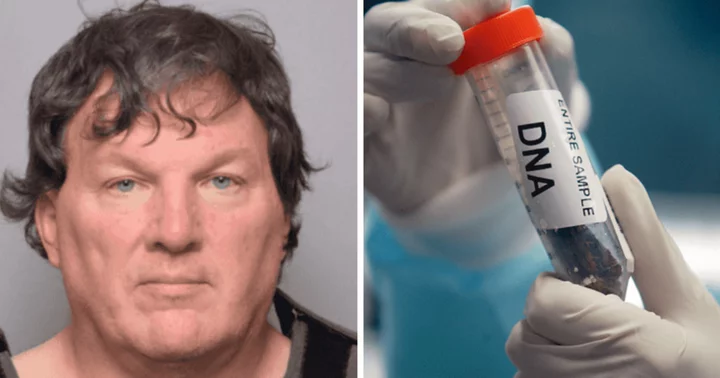SUFFOLK COUNTY, NEW YORK: Rex Heuermann, the 59-year-old architect connected to the Gilgo Beach murders was arrested on Thursday, July 13, and charged with three counts of first-degree murder, and second-degree murder for the deaths of Melissa Barthelemy, Megan Waterman, and Amber Costello as well as declared a "prime suspect" in the murder of Maureen Brainard-Barnes, collectively known as "The Gilgo Four."
Perhaps the most important evidence that led to Heuermann's arrest more than a decade after the murders is DNA testing. Officials found a male hair in the burlap sack containing Waterman’s remains that were a "99.96%" mitochondrial match to Heuermann’s hair. Additionally, investigators also found the hair of Heuermann's wife, Asa Ellerup, in the bodies of three victims. Reports suggest that the EMPOP database was involved in collecting the DNA data that eventually help investigators to track down and arrest Heuermann.
What is known about EMPOP?
EMPOP stands for "European DNA Profile Group (EDNAP) mitochondrial DNA Population Database," a web-based data collection consisting of human mitochondrial sequences from various populations across the world. According to the National Library of Medicine paper titled 'The EDNAP mitochondrial DNA population database (EMPOP) collaborative exercises: organization, results and perspectives', the aim of EMPOP's collaborative exercises was to determine "whether uniformity of mtDNA sequencing results could be achieved among different laboratories."
These laboratories were reportedly asked to sequence either two hypervariable regions HVI (16024-16365) and HVII (73-340) or the entire mtDNA control region from DNA extracts, buccal swabs, or bloodstains, in accordance with the protocol and strategies used in each individual laboratory. The results of the collaborative exercises (CE) were used to figure out possible sources of errors that could be witnessed during the analysis and interpretation of mtDNA profiles. The findings were then taken as a basis to tentatively make arrangements for the construction of a high-quality mtDNA database.
According to Database Commons, "the EMPOP database aims at the collection, quality control and searchable presentation of mtDNA haplotypes from diverse world populations." It further mentions that "the scientific concept and the quality control measures using logical and phylogenetic tools were found suitable for forensic purposes, by eg by declaration of the German Supreme Court of Justice (2010) the SWGDAM mtDNA interpretation guidelines (2013) and the updated ISFG guidelines for mtDNA analysis (2014)."
How did EMPOP database contribute to Rex Heuermann's arrest?
The EMPOP database has been credited in the 32-page document that details the evidence which helped officials to arrest Heuermann. As per court records, a male hair found in the burlap sack containing Waterman’s remains turned out to be a "99.96%" mitochondrial match to Heuermann’s hair. Investigators reportedly recovered Heuermann's DNA from an abandoned pizza crust that the architect tossed in the garbage outside his Manhattan office.
The DNA found in the pizza crust matched the hair found in the burlap containing Waterman's body. Meanwhile, the DNA of Heuermann’s second wife was reportedly found on the bodies of three victims. Testing of a water bottle taken from outside Heuermann’s home reportedly matched the sample of a woman's hair found on the tape used to tie up Costello and Waterman as well as the belt used to bind Brainard-Barnes’ feet. Forensic scientists later matched the hair to that of Ellerup.
The official document mentioned, "On or about February 24, 2023, Forensic Laboratory #1 was able to conclude that one of the DNA profiles generated from the aforementioned bottles taken from Defendant Heuermann’s residence indicated a female individual belonging to mitochondrial haplogroup K1c2 (which is the same mitochondrial haplogroup as the Female Hairs Recovered from the Three Victims)."
"This profile was then compared against the previously-tested female hair sample recovered on the remains of Ms. Megan Waterman, which indicated that the two 'belong to the same individual or someone closely related,'" the document continued. "Based upon the investigation and evidence recovered to date, that female is believed to be the wife of Defendant Heuermann. Forensic Laboratory #2 On or about March 23, 2023, the Suffolk County Crime Laboratory requested Forensic Laboratory #2, a lab specializing in forensic mitochondrial analysis, to conduct additional, independent analysis," it mentioned.
"On or about June 12, 2023, Forensic Laboratory #2 issued a report concluding that the DNA sample from the female recovered from the bottles outside the residence of Defendant Heuermann (i.e., Heuermann’s wife) and the Female Hair on Costello indicated that the 'mitochondrial DNA profile(s) are the same at all compared positions common to and between samples,' specifically at a rate that would, as per the EMPOP database,5 exclude 99.98%6 of the North American population from the Female Hair on Costello," it further explained.
"Forensic Laboratory #2 then compared the profile associated with the DNA sample from Heuermann’s wife to one of the two aforementioned female hairs recovered on the remains of Ms. Waterman, which also resulted in the conclusion that the 'mitochondrial DNA profile(s) are the same at all compared positions common to and between samples,' specifically at a rate that would, as per the EMPOP database, exclude 99.69% of the North American population from the hair recovered on Ms. Waterman," the report added.
The document mentioned that while 99.98% of the North American population can be excluded from the female hair found on Costello and 99.69% of the North American population can be excluded from the female hair found on Waterman, Heuermann’s wife "cannot be excluded from either the female hairs recovered on the remains of Megan Waterman and Amber Costello." So far, Ellerup has not been criminally charged and investigators believe she was either out of town or out of the country during the murder of the first four Gilgo Beach serial killing victims.









